Securing your house when you’re on vacation or at work is crucial to keep yourself and your belongings safe, a concern that remains highly relevant in 2023. However, not every homeowner can afford a full security system to protect themselves and their property. Fear not! That’s when light timers come into play. Light timers, in their most rudimentary form, have been around for decades. Initially, they were simple mechanical devices that used gears and pins to control the on and off cycles of lights. Over the years, as technology advanced, digital timers emerged, offering more precision, flexibility, and features than their mechanical counterparts.
TOP Best Light Timers On The Market
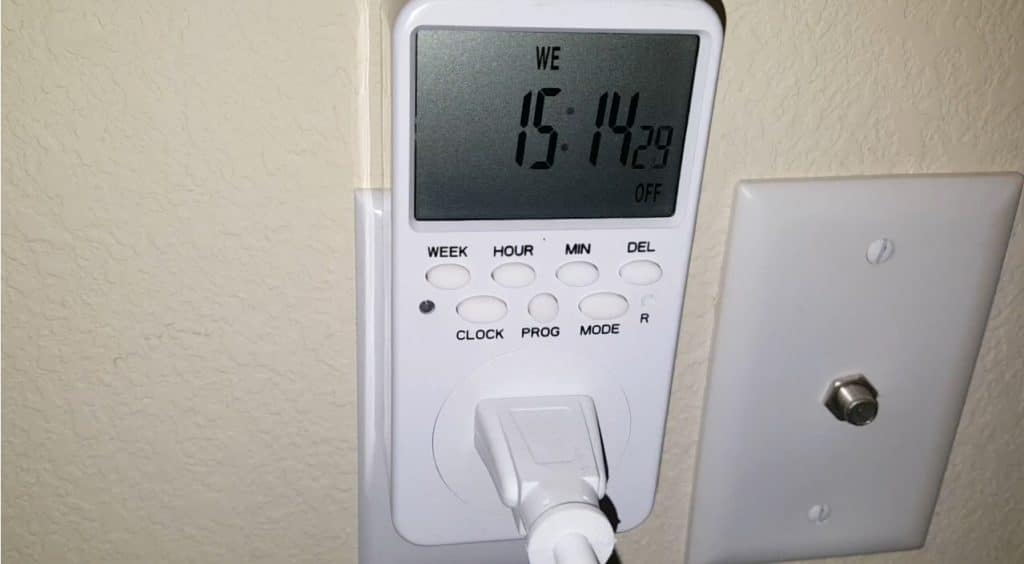
You can purchase a light timer in your local electronics shop, in a security equipment store, or order it online. Links will be provided.
1. Nearpow Dual Digital Light Timer
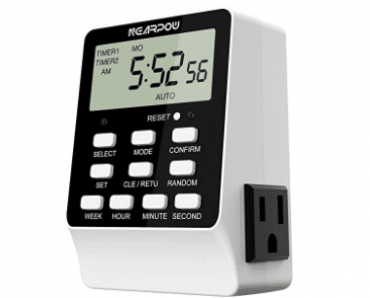
Its outlets can be used independently so that you can connect them to two separate devices simultaneously. The Neaprow Dual Digital Light Timer is precise down to the second and easily programmable. Its settings can be changed in a variety of ways to fit all of your requirements. More than a dozen personalized programs are available. It also has a vacation mode, meaning that the timer will turn the lights on and off at random times to confuse potential robbers, and it is appropriate for both indoor and outdoor applications.
- Features: Dual outlets, 10 programmable settings, backup battery.
- Benefits: Allows simultaneous control of two devices, versatile programming options, retains settings during power outages.
- Drawbacks: Might be complex for users unfamiliar with digital settings, potential battery replacement over time.
What Users and Experts Are Saying
- User Testimonial: “I’ve been using the Nearpow timer for six months now, and it’s been a game-changer for my living room setup. The dual outlets are especially handy.” – Sarah M., Homeowner
- Expert Opinion: “The backup battery feature in the Nearpow timer is essential for ensuring consistency, especially during power interruptions.” – John L., Electrical Engineer
2. Woods 50015WD Outdoor 7-Day Heavy Duty Digital Plug-in Timer
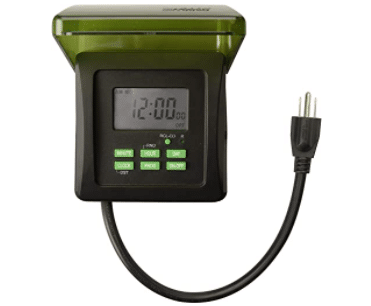
This timer also has a self-charging backup accumulator to store your personalized settings in case of a power loss. It features a digital timer, a random setting, and a countdown timer, and events can be set up for a whole week in advance.
- Features: Outdoor suitability, 7-day programming, heavy-duty design.
- Benefits: Suitable for exterior lights and devices, flexible scheduling, durable and weather-resistant.
- Drawbacks: Limited to outdoor use, might be overkill for simple lighting needs.
What Users and Experts Are Saying
- User Testimonial: “The Woods timer has made managing my garden lights a breeze. The 7-day programming is perfect for my varying schedules.” – Alex R., Gardener
- Expert Opinion: “For outdoor applications, the heavy-duty design of the Woods timer is ideal. It’s built to last.” – Dr. Emily S., Home Automation Expert
3. BN-LINK Digital Programmable Timer
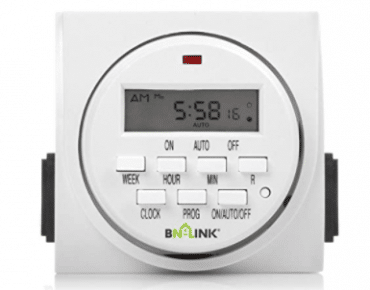
- Features: 8 on/off programs, built-in battery, large digital display.
- Benefits: Multiple scheduling options, retains settings during power outages, easy-to-read display.
- Drawbacks: Limited to 8 settings, potential battery replacement over time.
What Users and Experts Are Saying
- User Testimonial: “The large digital display on the BN-LINK timer is a standout feature. It’s so easy to set up and read.” – Liam T., Apartment Resident
- Expert Opinion: “BN-LINK’s inclusion of 8 on/off programs offers flexibility for most household needs.” – Rebecca H., Energy Consultant
4. UKOKE Digital Programmable Timer Outlet Wall Switch
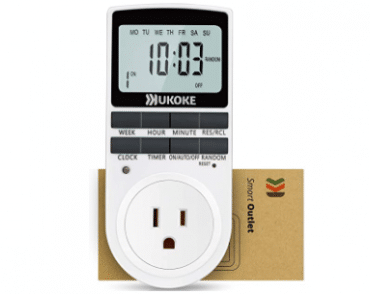
- Features: Wall-mounted design, 7-day programming, random mode.
- Benefits: Seamless integration into home decor, flexible scheduling, added security with random light activation.
- Drawbacks: Requires installation, might not be suitable for renters.
5. Enerlites HET01 In-Wall Digital Programmable Timer Switch
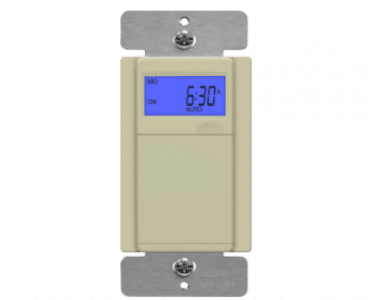
Both the Enerlites Timer and the UKOKE switch ship Prime, meaning that you can order it now and pick it up from your doorstep the next day.
- Features: In-wall design, 7-day programming, blue LED indicators.
- Benefits: Sleek design, versatile scheduling options, visual feedback with LED lights.
- Drawbacks: Installation might be challenging for some, blue LED might be distracting in dark rooms.
6. Intermatic P1121 Heavy Duty Outdoor Timer
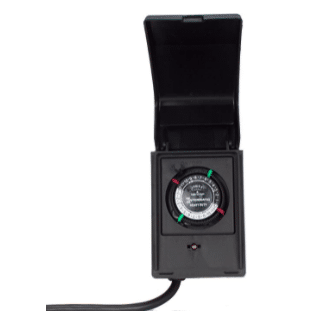
Its controls are a bit different from what you have already seen, as it is screen-free and uses pins instead of buttons. The green pin’s placement determines the starting time. To set the ending time, you need to put in the red one.
Due to its rather simple design, this timer switch is not as programmable as other items on the list, but it ships with 2 sets of pins for scheduling 2 on/off events daily.
- Features: Outdoor suitability, heavy-duty construction, manual override switch.
- Benefits: Ideal for exterior devices, durable and robust, flexibility with manual control.
- Drawbacks: Bulky design, limited to outdoor use.
7. Powrui Smart Power Strip With Outlet Extender
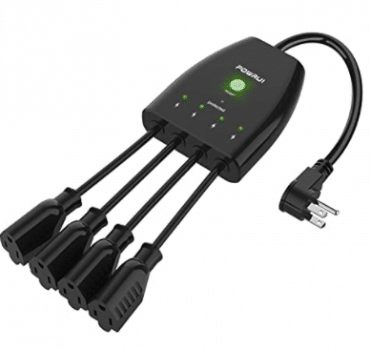
It has FOUR outlets that can function separately. The manufacturer has also made it possible to manage the device remotely using your phone. It can be linked to your Alexa or Google Assistant. It is pretty much everything-proof and can resist fire, heavy weather, and extreme temperatures.
- Features: Multiple outlets, surge protection, voice control compatibility.
- Benefits: Allows control of several devices, protects devices from power surges, compatible with voice assistants.
- Drawbacks: Requires Wi-Fi for smart features, might be overkill for users needing a simple timer.
8. BN-LINK Smart WiFi Outdoor Outlet
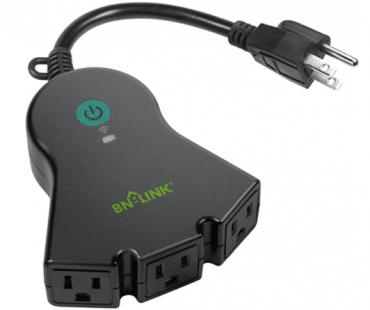
- Features: Wi-Fi connectivity, outdoor suitability, voice control compatibility.
- Benefits: Remote control via smartphone, weather-resistant design, works with voice assistants.
- Drawbacks: Reliant on stable Wi-Fi connection, potential compatibility issues with certain smartphones.
9. GE 24-Hour Heavy-Duty Outdoor Mechanical Timer
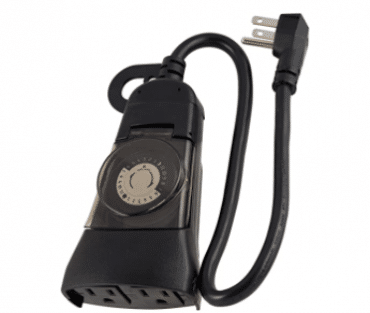
Its simplicity does not take away its functionality. It has 2 grounded outfits, is LED, CFL, Incandescent, and Halogen compatible, and can work in extreme weather conditions, making it the best fit for holiday and security lighting.
- Features: 24-hour cycle, mechanical design, outdoor suitability, multiple outlets.
- Benefits: Daily repeat settings, straightforward use, outdoor device control, simultaneous device control.
- Drawbacks: Limited mechanical flexibility, manual daylight saving adjustments, bulkier design.
10. Intermatic HB880R 15-Amp Outdoor Digital Timer
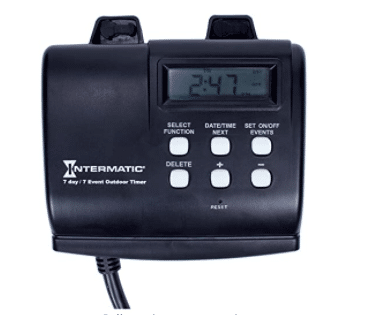
- Features: Outdoor design, 15-Amp capacity, digital display.
- Benefits: Suitable for heavy-duty exterior devices, easy-to-read digital display, robust construction.
- Drawbacks: Limited to outdoor use, might be complex for users unfamiliar with digital timers.
Let There Be Light
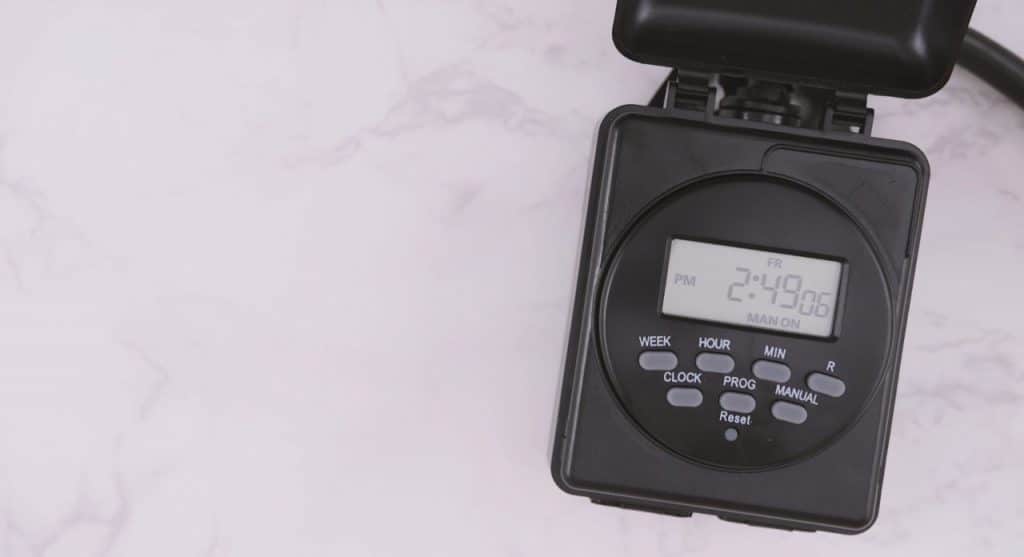
To put it simply, a light timer or a timer switch is a device that can be programmed to turn the lights on and off automatically. You can use it to control your outdoor lights or to make it look like your household is crammed with people when you’re away on a trip to scare thieves away, just like in that one “Home Alone” scene.
Timer switches can control pool pumps and sprinklers, outdoor appliances, fans and heaters, heavy-duty appliances, seasonal lighting and security lights, and other devices.
There are various types of timers out there — namely, mechanical timers and electronic ones, heavy-duty timers, outdoor timers, etc., etc. Mechanical timers are more reliable and durable and do not require electricity to work, proving to be especially helpful when there’s a power outage.. Electronic timers can be more precise and accurate down to the second.
Heavy-duty outdoor timers can withstand storms and blizzards, so you can automate your outdoor holiday lights, etc., etc.
Providing Ultimate Protection
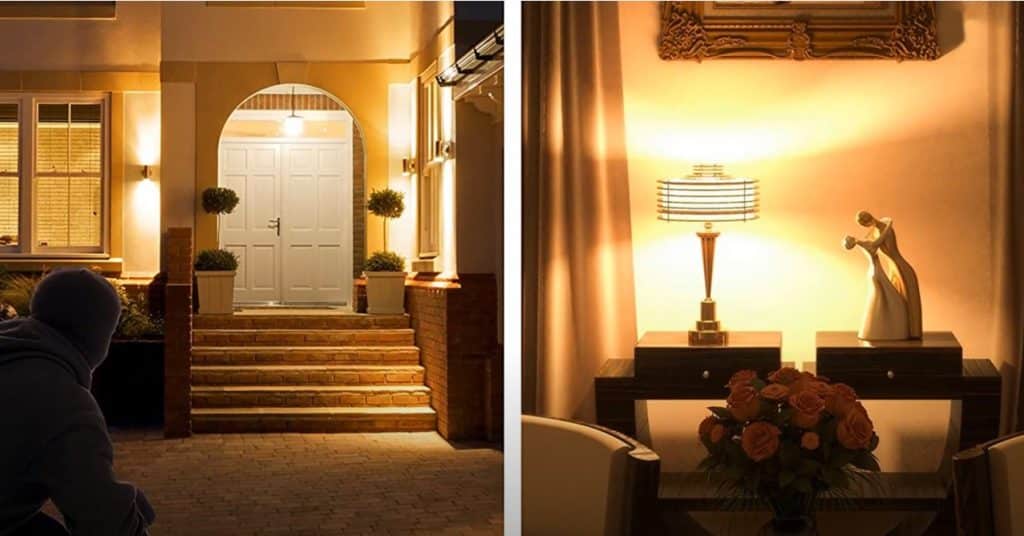
Criminals can observe your house for some time before attempting a break-in, and if they discover a strict pattern, they can conclude that the lights are automated, and there’s actually no one home. Obviously, you don’t want to give soon-to-be robbers any ideas, which is why you can program your timer to turn the lights on for just a few minutes or for multiple days straight. The settings for different days of the week can differ, making it impossible for thieves to determine whether you’re home or not.
So Many Options
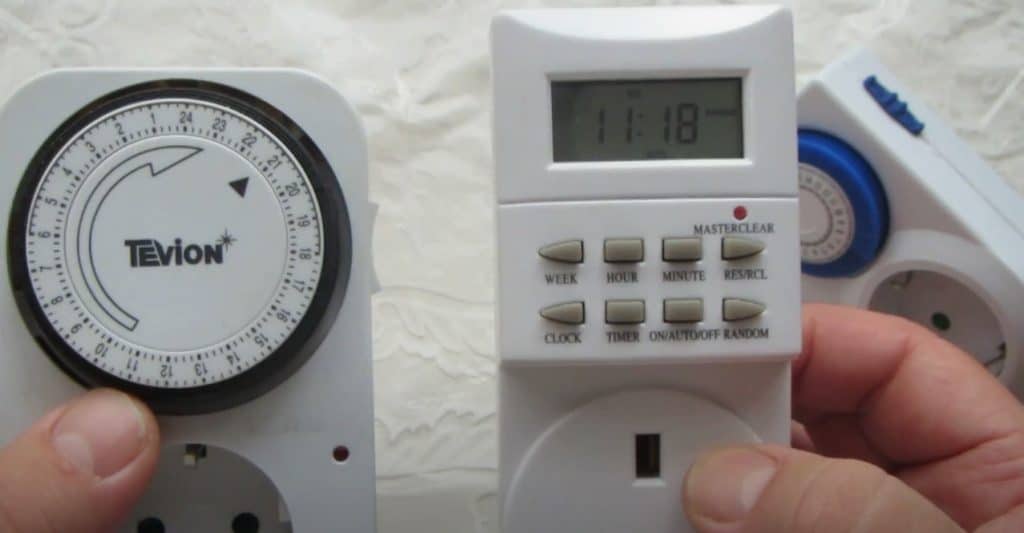
To help you shop for the best timer, let’s dissect the 2 categories of light timers. After that, we will take a look at the best light timer switches available on the market in 2021, their characteristics, notable features, pros, and cons.
1. Mechanical timers
Mechanical timers operate very similarly to toaster time knobs. As mentioned earlier, they don’t need electrical energy, relying instead on the mechanical force provided by the user. Turning the dial on a mechanical timer gives it the power that is required for the mechanism to work. Some of the mechanical spring-wound dial models are deemed old-fashioned, but that does not take away their durability and reliability. They also cost way less money.
However, due to their simplicity, they are not that precise as electronic models, they don’t allow for the same level of variability, and their settings cannot be personalized in the same way an electric light timer’s settings can.
Mechanical timers are often used to control outdoor lights, pool pumps, ceiling fans, water heaters, irrigation systems, signs, and certain other appliances. With a mechanical light timer switch, you won’t need to worry about power outages or its battery running out.
2. Electronic timers
Unlike mechanical timers, electronic light timers can be programmed to suit all of your personal needs. On/off events can be scheduled more precisely. They are accurate down to the second, can be put on automatic mode, their settings can be personalized so that you can adjust them to your likings.
Electronic models are far more complicated — some of them can be linked with smart-home systems and connected to your Alexa or Google Home. An electronic light timer typically has an LCD screen, a battery, a backup battery and can be used to operate almost every device in the household.
If you’re looking for a timer that controls outdoor appliances such as pool heaters, gardening gear like sprinklers, Christmas lighting, or backyard projectors, consider buying one with grounded outlets and built-in short circuit protection. If your timer switch is going to be a part of your permanent security system, timers that plug into the wall might be a good fit.
Some electronic timers, called astronomic timers, can automatically adjust to sunsets and sunrises. Astronomic timers make it easier to save energy by turning the lights off during nighttime. They can also help to protect your house better by turning security lights on right when it gets dark.
Best Light Timer Summary
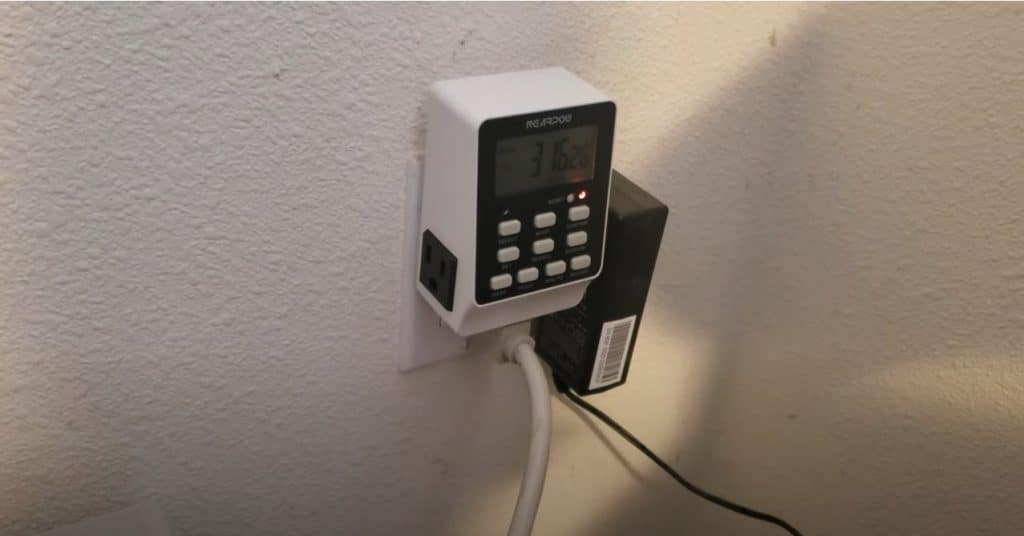
Affordable and fairly easy to use, they are life-saving tools that keep both your house and your bank account safe. Light timers save your money in two different ways: by scaring away thieves, thus preventing robberies, and by ensuring that appliances in your house shut down in time to keep you from wasting energy. So if you’re looking for a way to protect your belongings and save energy without spending a fortune, this is your sign to look into light timers.
Expert Round-Up:
“To choose the right light timer, it’s essential to consider your specific needs, the device’s features, and its compatibility with your home setup. Timers not only offer convenience but also energy savings and enhanced security.” – Michael P., Home Automation Specialist
“Modern light timers, especially smart ones, integrate seamlessly with other home automation devices. It’s an exciting time for home automation, with timers playing a crucial role.” – Dr. Nina K., Tech Reviewer
Frequently Asked Questions – FAQ
If you still have any questions left about light timers, look into the FAQ segment for an answer.
Why should I buy one?
Let’s sum up. Light timers can:
- lower your bills;
- make your life more eco-friendly by preventing you from overusing electricity;
- extend the life of your devices;
- make your house a harder target for thieves;
- automate your routine tasks, making your day-to-day life easier.
Are light timers safe?
They are. In fact, fairy lights in your room are probably more likely to cause a fire than a timer. Fires are usually caused by overloaded circuits or damaged cords and wires.
Still, you need to use it with caution — just like any device that uses electricity.
How do they work?
Light timers serve as communicators between power sources on one end and lights or other appliances on the other. A light timer is basically an electrical circuit with a time-measuring feature. It turns the lights on and off automatically at the times you set.
Mechanical light timers, as mentioned before, work similarly to toaster time knobs.
A mechanical timer has a spring that compresses when the timer is turned. After that, the spring starts unwinding, thus turning gears and moving the timer’s dial. When the spring is unwound completely, the timer finishes its cycle.
How do I program a light timer?
It totally depends on the model, and most timers come with step-by-step instructions. Most timers are user-friendly and fairly easy to program.
Let’s imagine you have to program the Neaprow timer that we reviewed at the beginning of the article.
Step 1. Charge the timer for at least half an hour.
Step 2. Reset the timer before using it
Step 3. Set the current time by pressing the WEEK, HOUR, MINUTE, and SECOND buttons;
Step 4. Press SELECT. Choose either Timer 1, Timer 2, or Timer 1&2;
Step 5. Press SET and choose the “ON” time using the WEEK/HOUR/MINUTE/SECOND buttons;
Step 6. Likewise, set the “OFF” time.
Step 7. Press “CONFIRM.”
How much electricity do they consume?
One thing is clear: a light timer saves way more energy than it uses. A mechanical timer’s consumption rate is about 1 Watt per hour, and a digital one uses about twice as much.
A 60-watt light bulb consumes 60 watt-hours. That is 60 times more. Leaving the lights on for a few nights will not make a significant difference, but if it becomes a bad habit, the impact will be more substantial. Now think how much energy is wasted when you leave your TV on! It is safe to say that light timers are worth the investment.


